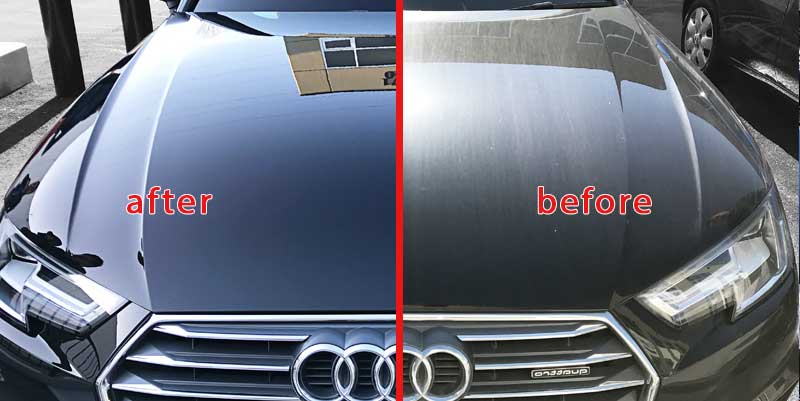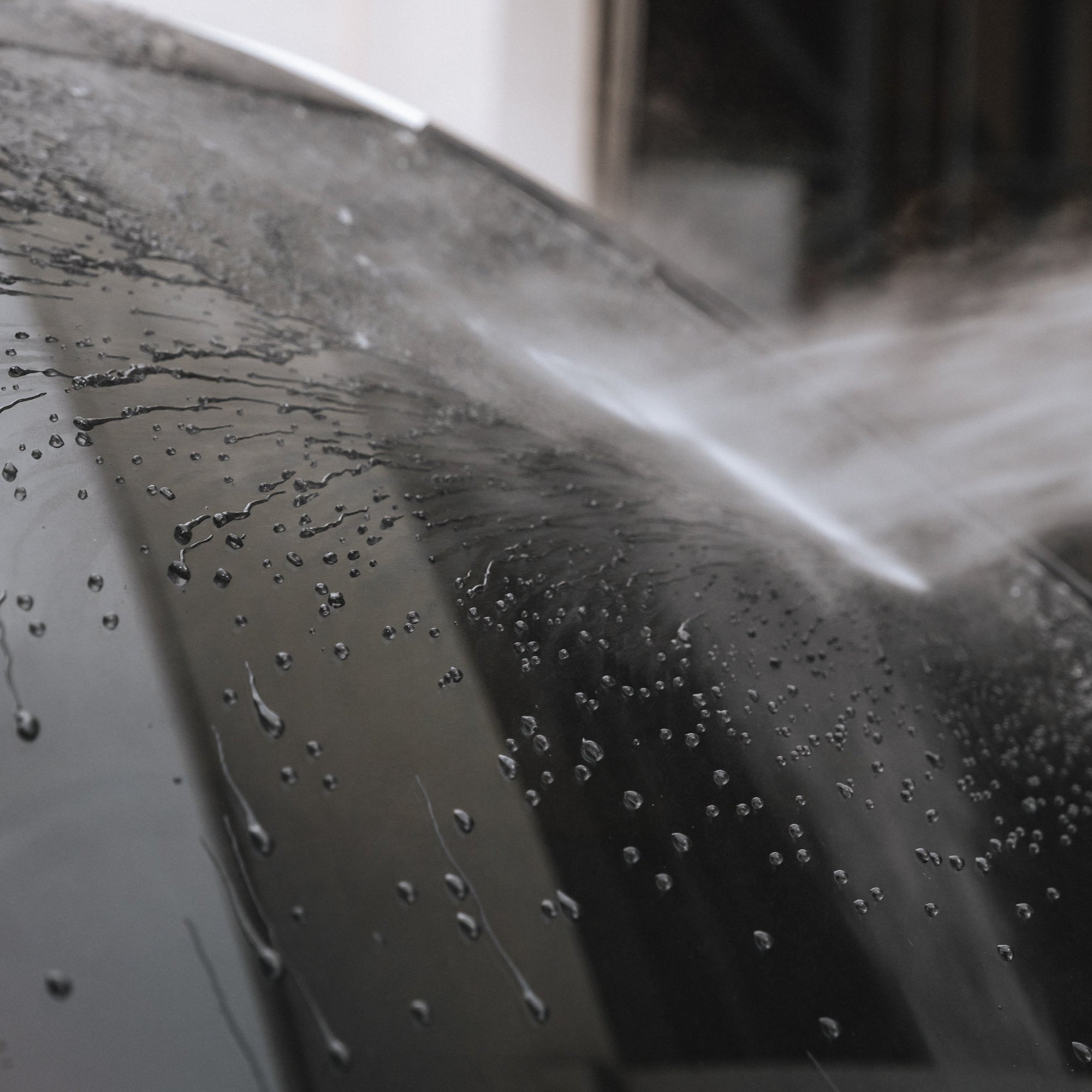Specialist Tips for Keeping Your Automobile After Applying Ceramic Coating
Specialist Tips for Keeping Your Automobile After Applying Ceramic Coating
Blog Article
Understanding the Science Behind Ceramic Coating for Enhanced Vehicle Resilience
The scientific research of ceramic finishing is transforming vehicle upkeep by offering a formidable guard against rough ecological factors. As we discover the complex structure and application process of ceramic coatings, we reveal the secrets behind their premium security and longevity (ceramic coating). How does this compare to conventional approaches, and what effects does it have for lorry maintenance in the long term?

Composition of Ceramic Coatings
Ceramic coverings are largely composed of silicon dioxide (SiO2), which is stemmed from natural materials like quartz and sand. This substance forms the backbone of the layer, offering its particular solidity and resistance to environmental aspects. Along with SiO2, ceramic coverings usually incorporate titanium dioxide (TiO2) for improved UV defense and increased resistance to environmental contaminants. These nanocomposite products develop a robust, chemical bond with the car's surface area, supplying an enduring protective layer.
The formulation of ceramic finishings is a careful procedure where the focus of SiO2 can dramatically influence the covering's performance. Higher SiO2 material normally leads to better longevity and solidity, adding to the coating's ability to resist scratches and chemical etching. However, the balance of components is essential; too much SiO2 can make the covering brittle, while too little can compromise its safety properties.
Suppliers might also integrate added compounds, such as polysilazane, to enhance adaptability and convenience of application. These ingredients improve the coating's hydrophobic buildings, guaranteeing water and pollutants grain off the surface easily. This crafted structure underscores the effectiveness of ceramic finishes in guarding a lorry's outside versus a variety of adverse conditions.
Application Process Discussed
Using a ceramic finishing to a vehicle entails several critical actions, each vital to making certain optimal bond and performance of the protective layer - ceramic coating. The procedure begins with a comprehensive clean and decontamination of the automobile's surface to eliminate dust, grime, and previous waxes or sealers. This action is important as any kind of pollutants left externally can hinder the finish's ability to bond efficiently
Adhering to the initial cleaning, the following action involves polishing the lorry to eliminate any type of blemishes, such as swirl marks or scrapes. Polishing guarantees a smooth surface area, which is vital for the finishing to stick properly and offer an uniform coating. After polishing, a surface preparation spray is utilized to get rid of any kind of remaining residues and make certain that the surface area is entirely clean.

Safety Benefits
Often hailed for its remarkable safety top qualities, a ceramic finishing provides numerous advantages that considerably improve lorry resilience. At its core, ceramic finish forms a hard, semi-permanent barrier over a car's outside, which acts as a guard versus various environmental threats.
Moreover, ceramic finishings show hydrophobic homes, suggesting they repel water and facilitate a self-cleaning impact. This characteristic decreases the adherence of dust and mud, streamlining maintenance and cleansing procedures. The finish's resistance to chemical etching further ensures that the vehicle's surface stays unblemished in spite of direct exposure to extreme cleaner and contaminants.
In enhancement to these safety benefits, the ceramic finish improves an automobile's visual charm by producing a glossy finish that accentuates color depth and quality. This not just maintains the automobile's aesthetic appeal but also adds to its lasting worth by protecting the stability of its exterior over time.
Contrasting to Standard Techniques
Unlike conventional methods of vehicle defense, such as shaving or sealants, ceramic coverings offer an even more sturdy and durable solution. Where waxes and sealers usually offer a temporary layer of defense, usually needing reapplication every few months, ceramic coatings create a semi-permanent bond with the car's paint. This bond creates a safety layer that is resistant to ecological pollutants, UV damages, and minor abrasions.
Traditional waxes are largely composed of all-natural elements like carnauba wax, providing a shiny finish yet lacking the durable protective top qualities of ceramic finishings. Sealants, while synthetic and offering a little better resilience than waxes, still drop short in contrast to the resilience and chemical resistance of ceramic finishes. The advanced modern technology of ceramic coverings includes nanotechnology, which allows them to complete tiny flaws in the paint surface area, resulting in a smoother and a lot more hydrophobic finish.
In regards to application, ceramic coverings need a more meticulous procedure, typically demanding expert setup to ensure optimal performance. This contrasts with the relatively simple application of waxes and sealers, which can be applied in your home. The superior protection and aesthetic enhancement supplied by ceramic layers justify the investment for those seeking lasting automobile conservation.
Long Life and Upkeep
How does the longevity of ceramic coverings equate into simplicity of maintenance for automobile owners? The sophisticated formula of ceramic finishes supplies a durable protective layer on the car's surface, which substantially prolongs the life expectancy of the automobile's exterior surface. This sturdiness implies that the finishing serves as over at this website a shield against ecological impurities such as UV rays, bird droppings, and roadway grime, which can otherwise degrade paintwork with time. Consequently, automobiles coated with ceramic products require much less regular washing and detailing initiatives, consequently minimizing maintenance time and costs for owners.
In addition, the hydrophobic nature of ceramic finishings enables water and various other liquids to grain up and roll off the surface, bring dirt and debris with them. This property reduces the accumulation of impurities, making routine cleaning a lot more efficient and much less labor-intensive. Owners profit from a regularly streamlined, glossy look with minimal initiative. While the coating itself is resilient, it is not totally maintenance-free. Routine inspections for damage and periodic reapplication are advised to guarantee the safety layer continues to be intact. Therefore, ceramic coatings offer a useful equilibrium in between long-term toughness and streamlined maintenance for car treatment.
Verdict
Ceramic coverings, with their advanced chemical composition of silicon dioxide and titanium dioxide, provide a formidable obstacle versus ecological damage, considerably enhancing vehicle durability. The hydrophobic homes promote self-cleaning, reducing upkeep initiatives and protecting aesthetic allure. When contrasted to standard techniques, ceramic coverings offer premium security see against UV rays, oxidation, and chemical etching. This modern technology prolongs the lifespan of vehicle outsides, making it an ingenious solution for lasting preservation and minimal maintenance.
The formulation of ceramic layers is a thorough process where the concentration of SiO2 can dramatically influence the finish's performance.Using a ceramic coating to an automobile entails several essential steps, each necessary to ensuring ideal attachment and performance of the protective layer.Commonly hailed for its remarkable protective high qualities, a ceramic layer provides many advantages that considerably enhance automobile durability. The sophisticated formula of ceramic coatings offers a robust protective layer on the automobile's surface area, which significantly extends the life expectancy of the cars and truck's outside coating.Ceramic coatings, with their advanced chemical composition of silicon dioxide and titanium dioxide, offer a powerful obstacle versus home ecological damages, substantially improving automobile longevity.
Report this page